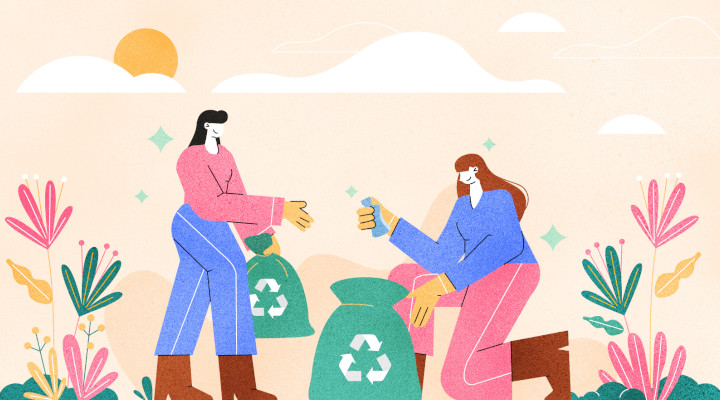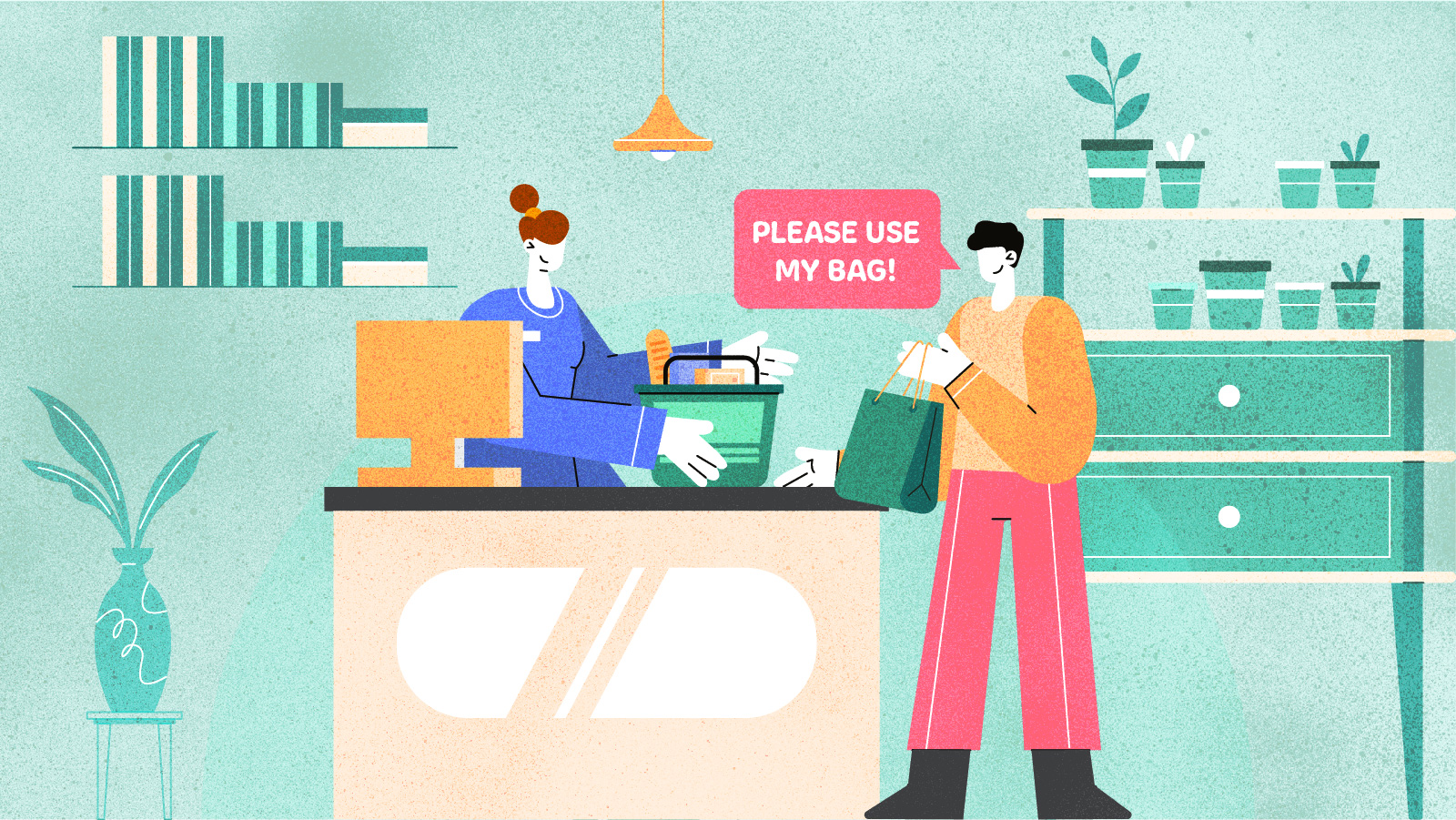Debunking Eco-Myths In Singapore

Myth #1: “Eco”, “Green” or “Biodegradable” Labels Means a Product Is More Environmentally Friendly
As people become more environmentally conscious, there has been more demand for products made with sustainable practices or materials.
This has also led to a rise in “greenwashing”: the phenomenon of brands making marketing claims that products or services offered are environmentally friendly. As a result, such products may be priced at a premium.
A local company that has been accused of greenwashing is SingGas, which promoted its cooking gas as a “clean fuel” despite its product, liquefied petroleum gas, still producing greenhouse gases.
To ensure you’re truly supporting environmentally friendly practices, always do your own research and look out for recognised green certifications such as the Singapore Environmental Council’s Green Label and GreenDNA certificate.
Tip: Avoid Using Oxo-degradable Plastic Bags for Storage
Look out for plastic bags that are labelled “oxo-degradable”. These bags break down more quickly over time with exposure to air to become microplastics. They turn into plastic “confetti” in your storage drawers – or worse, end up polluting the environment.
Myth #2: Recycling Is Easy - Just Put Everything in the Blue Bins
Not everything belongs in the blue recycling bins. Common materials that can be recycled include paper, metal, plastic and glass – but only certain types are suitable. For example, envelopes and boxes with plastic lining are acceptable, but any kind of tissue paper is not. Styrofoam, a type of plastic, is not recyclable, whereas bubble wrap and similar plastic packaging are recyclable.
Remember to rinse all food or drink containers thoroughly before recycling these. Mixing in liquid or food waste into a recycling bin could make the entire bin of items unrecyclable. TetraPak cartons for beverages are more easily washed than containers for oily food, such as pizza boxes, for example.
If you are unsure, check the labels on the recycling bins before depositing your items.
E-waste such as batteries, lightbulbs and laptops should not be placed in the blue bins. Instead, drop off these items at e-waste collection points, which can be found islandwide at malls and supermarkets. These will be sorted and recycled into raw materials for use in new products. And don’t worry about data protection – all data stored on data-containing devices will be permanently erased.
Tip: Know What To Keep for Recycling
Visit the MSE Instagram or keep this list to know at a glance what is and isn’t recyclable through the blue bins.

Myth #3: No Need To Cut Down on Plastic Since Singapore Incinerates Everything
In Singapore, incineration reduces waste by about 90% and produces steam that generates electricity. The remaining ashes are sent offshore to the Semakau Island landfill. While this process does not hurt the environment, Singapore’s only landfill is filling up rapidly and projected to be full by 2035.
Since COVID-19 hit in 2020, the use of disposable plastic has spiked from increased takeaway and food delivery orders. A study by a group of NUS alumni showed that an extra 1.33 million kg of plastic waste was produced during the Circuit Breaker period. Similarly, there was an increase in bulk purchases at supermarkets, resulting in greater use of single-use plastic bags.
A way to contribute towards zero waste is to bring reusable containers for takeaways. Or take a short break to buy food in-person more often instead of simply opting out of disposable cutlery via food delivery apps.
Tip: Cut Costs by Bringing Your Own
Many retailers in Singapore – FairPrice Xpress, Don Don Donki, IKEA, The Body Shop, Uniqlo, Decathlon – no longer provide free single-use plastic bags. Others such as Yankee Candle and Starbucks offer discounts for using your own bag or takeaway containers. Find out more from BYO Singapore.
Myth #4: Unfinished Food Has To Be Thrown Away
Food waste accounts for about half of the waste disposed of by each household a day in Singapore, according to a study commissioned by the National Environment Agency. While expired food or food left out for more than two hours should not be consumed, there are ways to reduce food waste on top of cooking or buying only what you can finish.
Instead of simply dumping leftovers into the trash, try your hand at composting and making fertiliser. The National Parks Board provides several guidelines for DIY composting at home.
Safe and non-perishable food items can also be donated to The Food Bank Singapore, where they will be packed and distributed to needy households.
Tip: Only Buy What You Need
This applies not only to food, but to all purchases. To prevent impulse buys, some questions to ask yourself include: “Is this a need or a want?”, “How will I use this?” and Marie Kondo’s “Does this spark joy?”
Myth #5: Individual Efforts Do Not Make Much of a Difference
While solo efforts may seem insignificant, especially in comparison with larger businesses and industries, individual consumers’ efforts can still make an impact.
Making small changes such as choosing energy-efficient electrical appliances and commuting via public transport are personal choices everyone can make to help the environment in the long run.
These individual efforts can also help to create systemic change by spreading awareness, and motivating and inspiring others to do the same. When others see that bringing your own cutlery or takeaway containers isn’t that inconvenient, they may be inspired to try it too.
In today’s increasingly connected world, this effect is further amplified through social media. Think of it this way – sharing a green practice among family and friends, in your neighbourhood or organisation, may spark off a green revolution elsewhere!

To get more stories like this, subscribe to the Challenge Telegram channel.
Related Stories:
- POSTED ON
Jan 13, 2022
- TEXT BY
Loh Supei
- ILLUSTRATION BY
Liew Xinyi









